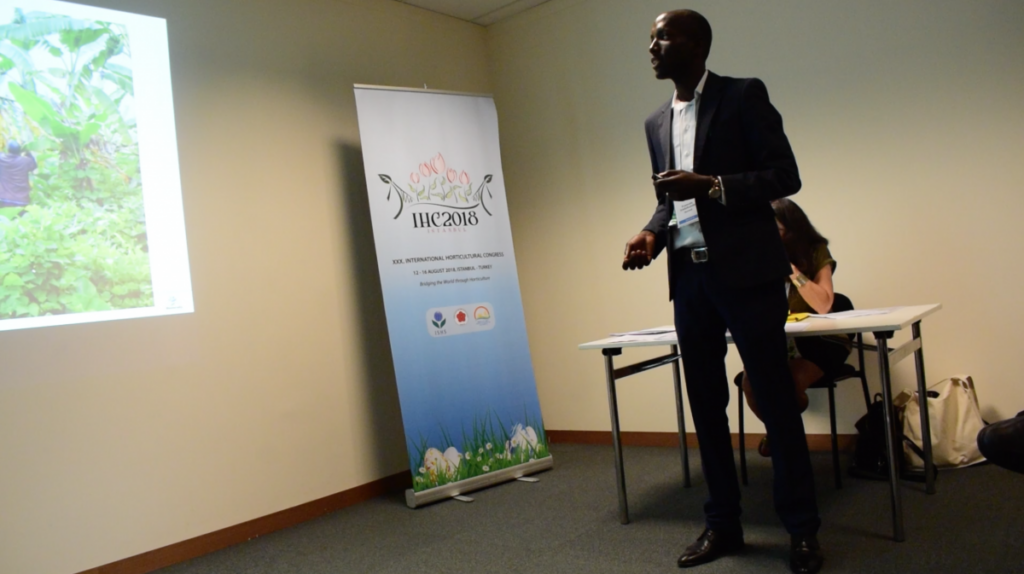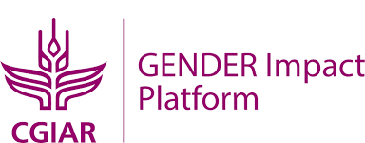By: Francois Iradukunda, Bioversity International/GREAT RTB Fellow
Perspectives on gender can change over time: this is true not only of society and culture, but of researchers as well.
Throughout my professional career as an agronomist, it was not so easy for me to understand why a proven agricultural technology, once outscaled, would often fail to achieve the desired impacts on farmers livelihoods. Recently, I had the opportunity to reflect on how my understanding of gender and research has evolved in the context of presentations I delivered at two ISHS-ProMusa symposia as part of the 29th and 30th International Horticulture Congress (IHC) held respectively in Brisbane, Australia in August 2014 and in Istanbul, Turkey in August 2018.
These events have been a venue for me to network and interact with other scientists from different domains and with different competencies. In both meetings I shared the results of research conducted in my home country, Burundi. My presentations in the two symposia dealt with strategies to manage the two most devastating banana diseases in Burundi: Banana Bunchy Top Disease (BBTD), a viral banana disease and Banana Xanthomonas Wilt (BXW), a bacterial banana disease.

François Iradukunda presents at the 2018 ISHS-ProMusa symposium
Although the topics I presented at the meetings were similar – strategies to reduce the spread and impact of these two banana diseases with targeted awareness raising and management practices – they had quite different perspectives on gender norms and agency in banana crop and banana diseases management. This year, I was asked by a participant how gender impacts BXW management. I wonder how I would have responded to that question in the 2014 conference. Although I’m not sure that I would have been more convincing in my response, I surely know I’ve changed the way I think and act when it comes to gender in agriculture.
As a GREAT fellow, from the Gender-Responsive Root, Tuber and Banana Breeding Course that was held at Kampala, Uganda 2016-2017, I learned how to apply the theory and practice of gender-responsive research into my current research activities. After a theory part of the course, on a competitive basis, I was granted a GREAT seed grant to apply my new knowledge and skills to a gender research topic.
Mentored by Dr. Renee Bullock, a gender post-doctoral fellow at IITA , and Anne Rietveld, a gender scientist at Bioversity International, together with my supervisor Boudy van Schagen, a social scientist at Bioversity International, we conducted a gender study that aimed to understand the gender roles and practices in innovation processes. The research was focused on BXW disease management using reduced labor and cost-saving approach called SDSR (Single-Diseased Stem Removal) in Burundi.
By collecting and analysing sex-disaggregated data from farmers’ interviews, I was able to understand that men and women have different point of views on agricultural technologies or innovations. For instance, a man said in a focus group discussion, “if you grow other crops in a banana field you can accidently cut the roots of the bananas, which can lead to a decrease in production”. Conversely, a woman said, “If we do not associate crops, like bean, taro [into banana], it would be a loss because land is scarce”, while another woman added, “the banana keeps the humidity for the beans during the first rainfall season and protects them from drying out.”
From this example it is clear that men and women often express distinct and different cropping systems preferences. Here, men prefer banana monoculture and women prefer banana intercropped with annual crops. Therefore, research to investigate gender in systems is essential to ensure that approaches we introduce in community do not cause undue harm that undermines women’s empowerment and smallholder livelihoods. Furthermore, we learned that a gender-blind “one size fits all” approach towards the introduction and scaling of innovations will usually not work.
The 2018 ISHS-ProMusa symposium was on “Growing and marketing banana under subtropical conditions”, not a gender focus. Before applying to it, I wondered how my topic on gender would match with theme of the symposium. When I revisited my notes from the GREAT gender-responsive research training, on why gender in agricultural development, I fell on this quote: “If gender is not fully accounted for in agricultural research and development, it will be impossible to meet the food needs of future populations or ensure that agricultural productivity translates into improved welfare for the poor. Changing agricultural research and development (R&D) from male-dominated to gender-equitable is not merely an issue of political correctness or ideology; it is a matter of development effectiveness that can benefit everyone” (Meinzen-Dick et al. 2010). Finally, I ended up understanding that gender is a cross-cutting theme that fits with any discussion that aims to address the priorities of both women and men in the world.
Now I am looking at how innovations like SDSR might be better introduced and scaled using gender-responsive approaches. Of course, to get there, scientists, policy makers and practitioners need to be gender-responsive and well equipped in gender methods and techniques. Anyone can become more gender-responsive, it is a matter of interest, knowledge and application.
I would acknowledge my gratitude to GREAT and Bioversity International for providing me with the tools and resources used to now apply what I have learned, as well as providing the support for me to attend the IHC symposia.
François’ poster from the 2018 ISHS-ProMusa symposium is available here.





